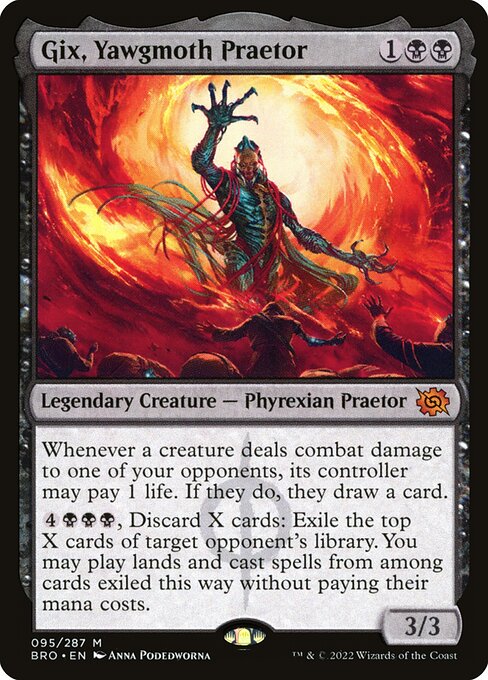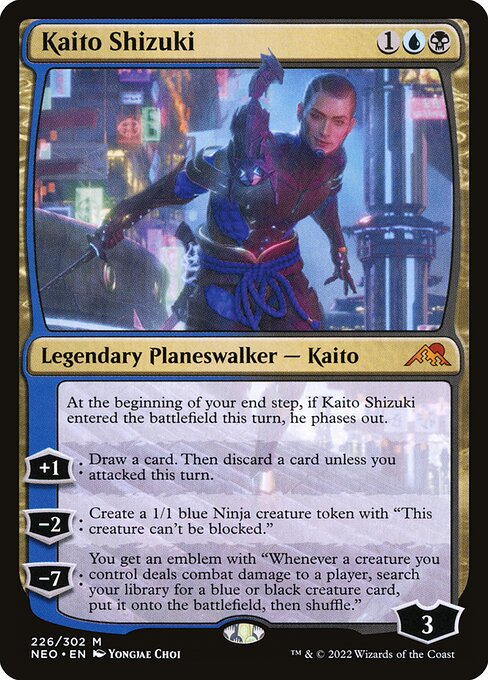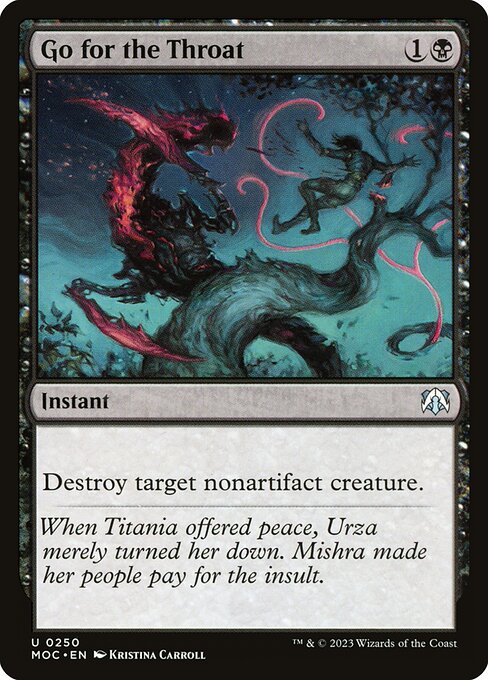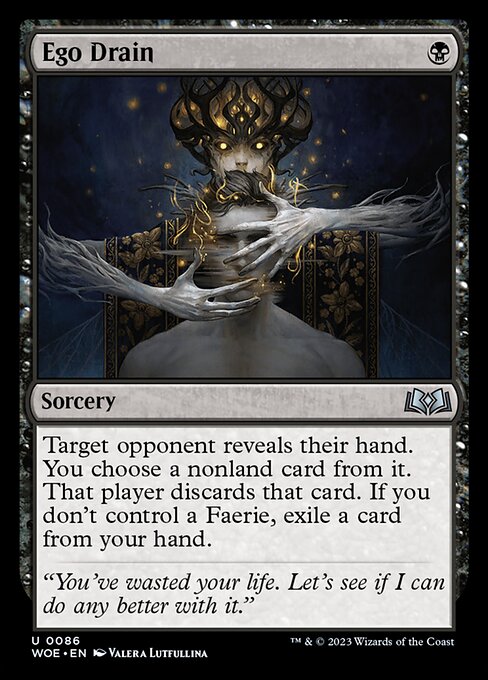Table of Contents
With the printing of some powerful Faeries in Wilds of Eldraine and synergistic interaction pieces, a new Dimir Tempo deck has emerged. Similarly to any UB deck, it focuses heavily on instant speed interaction. What Faeries does differently is that it also introduces low-to-the-ground threats with flash.
This enables you to play the whole game at instant speed but never spend turns just drawing cards, instead dropping in an attacker on your opponent’s end step. This makes Dimir Faeries a perfect choice for anyone looking to disrupt their enemies while also closing the games in a timely manner.

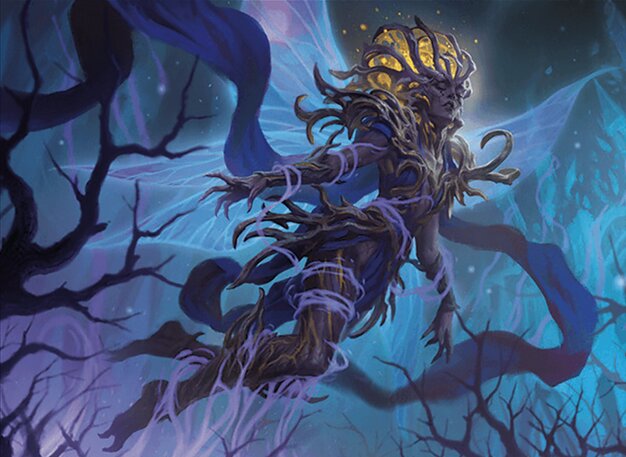

Planeswalkers (2)
Creatures (17)
Instants (14)
Sorceries (3)
Lands (24)
60 Cards
$500.66
Sideboard
15 Cards
$49.33
Deck Tech
Creatures
In a deck with limited one-mana interaction, it’s a perfect one-drop. It comes in cheap, enabling Faerie synergies at a small price while allowing you to spend turn one developing rather than simply passing the turn.
It won’t block or pressure your opponent immediately given it wakes up after three untap attempts. Where it shines is mid-game, where a two-power flyer with expensive ward is a meaningful and difficult-to-remove threat.
Yuta Takahashi’s Faerie Rogue is a perfect fit for this deck for a plethora of reasons. It costs two mana, has flash, flying, and two power, and it punishes your opponents for drawing cards.
Speaking of drawing cards, there are numerous effects in the format that draw extra cards intentionally or incidentally. Connive, cycling as mechanics, cantrips, Blood and Clue tokens as groups, and specific cards like Spirited Companion, Kaito Shizuki, or Tenacious Underdog’s Blitz trigger. It will be relevant much more often than one would expect.
If that wasn’t enough, late game you can easily draw two cards deep, and given that your cards are often substantially better than your opponents’, it can easily snowball out of control.
I would always play a full playset in a blue tempo deck.
Another two-mana flash flyer that swings for two. Obyra’s main drawback is in its legendary supertype, as it’s a card we would love to have multiple of in play.
UB cost might prove to be difficult to pull off on turn two in some games, but Obyra will deal a fair amount of damage regardless of when we play it.
Gix has always been a powerful draw engine in creature-based decks. It shines even brighter in Faeries given that each Faerie has evasion, meaning we will find ourselves drawing a card with the Praetor’s first ability quite often.
Gix’s activated ability is often a trap unless we have a lot of spare lands. Spending a whole turn to maybe play a card is barely ever good. It will only be a good choice against Domain Ramp.
Kaito Shizuki is pure card advantage in a deck full of flyers, as we usually won’t be forced to discard a card after using its ‘+1’. It will often function as additional copies of Gix with the upside of creating unblockable tokens in situations where we’re forced to race with our opponent.
Since Kaito is a planeswalker, it is a tad more difficult to remove over creatures and will help us generate resources, especially against control decks.
It’s particularly tough to remove since it phases out the turn it comes down. It gives you that bit more of flexibility in how you want to use it, without the fear of losing it next combat. Admittedly, this deck is not very good at defending it.
The only other maindeck non-Faerie creature. And one that has proved extremely powerful in the current Standard format. Sheoldred, the Apocalypse is a card we should always play when in Black, and since it’s the biggest removal magnet in our deck, it will help our Faeries survive.
Sheoldred, the Apocalypse is also a great tool to stabilise when playing against an aggro deck thanks to its big body and ability to regain our precious life points. That aspect of Sheoldred, the Apocalypse is crucial given that we don’t have many good blockers and rely heavily on removal spells to survive.
Interaction
In a deck full of Faeries, Faerie Fencing is the de facto premium removal. If you have a Faerie in play when casting this spell, it will act as a proxy Cut Down that can kill bigger threats if need be.
We don’t play the full playset as it’s going to cost us a large portion of our turn when facing bigger threats and we run other great interaction pieces in the deck.
It kills almost anything on sight and thanks to its low cost will often trade up on mana, allowing us to play a flashy threat on the same turn.
Spending full four mana to play a premium threat, such as Sheoldred, the Apocalypse or Serra Paragon only to have it die to Go for the Throat would give a headache every time.
A mainstay counterspell in the current Standard is even more powerful in Faeries than anywhere else thanks to our flexibility.
Since it’s on-stack interaction, it disallows our opponents from getting any value from the cards they play, which is something any removal spell won’t offer. Etali, Primal Conqueror or Atraxa, Grand Unifier players won’t be thrilled to have their expensive spell countered by a measly two mana.
We won’t have spare creatures to sacrifice for Casualty in this deck. That means that sometimes we will have to offer our opponent a two-for-one to counter a crucial spell.
Spell Stutter on face value offers us the exact same effect as Make Disappear. It becomes more potent the more Faeries we have in play, which makes this card a better counterspell for us.
Spell Stutter follows the play pattern of its namesake, Spellstutter Sprite, where you can first play a faerie to later play Spell Stutter for a hard counter.
This card dynamics plays out differently from other one-mana discard spells, such as Thoughtseize or Duress, when you often want to play them turn one. Ego Drain is a card you actively don’t want to play turn one as it will always take two cards for just one.
Play it turn two, with a Sleep-Cursed Faerie in play, and suddenly Ego Drain becomes the best discard spell ever printed since you can get any best card from the opponent’s hand without any drawback.
It also plays well with Flash faeries, since we can play a faerie on our opponent’s end step to start our turn with Ego Drain.
Best of One



Creatures (16)
Instants (17)
Sorceries (3)
Lands (24)
60 Cards
$471.62
It’s always expected to face more aggro decks in Best of One, so we want to introduce more copies of efficient removal spells to our list, especially since we don’t play many good blockers.
Budget
Classic case where the interaction is super cheap but the threats are rares and mythics which are irreplacable.
Matchups and Sideboard Guide

Five-Color Ramp
| In | Out |
|---|---|
| +4 Disdainful Stroke | -3 Faerie Fencing |
| +2 Negate | -3 Go for the Throat |
There is nothing we want to actively face than decks whose curve starts at 3 mana.
We can deploy our threats at our leisure and then back them up with a wall of counters. With so many counterspells in the maindeck alone, it’s nigh-impossible for them to force through Invasion of Alara or Atraxa, Grand Unifier.
Post-board we’re siding in six more permission spells to make the matchup very favourable.
This matchup is almost *the* reason the play Faeries in the first place.
Dimir Midrange
| In | Out |
|---|---|
| +3 Liliana of the Veil | -3 Faerie Fencing |
| +2 Graveyard Trespasser | -2 Make Disappear |
This is a bit tricky. Dimir Midrange is a bit bigger version of our deck and historically it’s been tough to beat a deck that’s the right amount bigger.
However, we can try to take advantage of our lower curve, the number of permission spells, and instant speed gameplay.
It’s the tempo aggressive draws that are going to allow you to win.
Mono Red Aggro
| In | Out |
|---|---|
| +2 Graveyard Trespasser | -3 Gix, Yawgmoth Praetor |
| +2 Cut Down |
What’s crucial in this matchup is that you should happily trade off your creatures for theirs. When it comes to stabilising, you only have Sheoldred, the Apocalypse. Other than that, you’d be at the mercy of them not burning you out.
That’s why you need to either close the game or have the right amount of countermagic to contain any top-decked burn spells.
Dimir Faeries Mirror
| In | Out |
|---|---|
| +3 Liliana of the Veil | -4 Make Disappear |
| +2 Graveyard Trespasser | -1 Ego Drain |
In the mirror, the player with Sleep-Cursed Faerie is going to be heavily advantaged from the get-go. I’d happily take the hands that contain it.
Well-timed Liliana of the Veil can albo be back-breaking since this deck cannot cleanly get rid of Liliana on an empty board.
Esper Legends
| In | Out |
|---|---|
| +3 Liliana of the Veil | -4 Make Disappear |
| +2 Cut Down | -1 Spell Stutter |
We assume a control-ish role but we *have to* be able to close the game, since their card quality exceeds ours.
We need to utilise evasion and remove Raffine, Scheming Seer the moment you see it.
You want to play a game of ‘deploy a threat, kill everything on sight’.
When it comes to countermagic, try to convert it mainly against cards costing 3+ so that you’re trading up on mana.
Tips and Tricks

- Sleep-Cursed Faerie can be untapped mid-combat, which creates an unexpected blocker. That is especially important when our opponents may be sleeping on it and attacking into it once all stun counters are removed.
- Ego Drain is a one-for-one in two situations – when you control a Faerie or when you have no other cards in hand. Make use of it and play Ego Drain aggressively when top-decked.
- Be wary of opponent removal when playing Ego Drain – it counts Faeries upon resolution, so if you’re left with no sprites then, you will have to exile a card from your hand.
- If your opponent removes your last Faerie with Ego Drain on the stack, you can play Faerie Mastermind or Obyra, Dreaming Duelist to retain all your other cards in hand.
- You can play a flashy Faerie in response to opponent removal targeting Obyra, Dreaming Duelist to trigger its ability.
- Faerie Fencing only cares if you have a Faerie on cast, so you will often be able to play it as one mana -3/-3.
- If you connect with multiple creatures, Gix, Yawgmoth Praetor will trigger this many times.
- You don’t have to draw off Gix, Yawgmoth Praetor if you’re low on life.
- If you have Obyra, Dreaming Duelist in play and your opponent is on one, you can kill them immediately with another copy of Obyra.
Premium >
Enjoy our content? Wish to support our work? Join our Premium community, get access to exclusive content, remove all advertisements, and more!
- No ads: Browse the entire website ad-free, both display and video.
- Exclusive Content: Instant access to all exclusive articles only for Premium members, at your fingertips.
- Support: All your contributions get directly reinvested into the website to increase your viewing experience!
- Discord: Join our Discord server, claim your Premium role and gain access to exclusive channels where you can learn in real time!
- Special offer: For a limited time, use coupon code L95WR9JOWV to get 50% off the Annual plan!




























